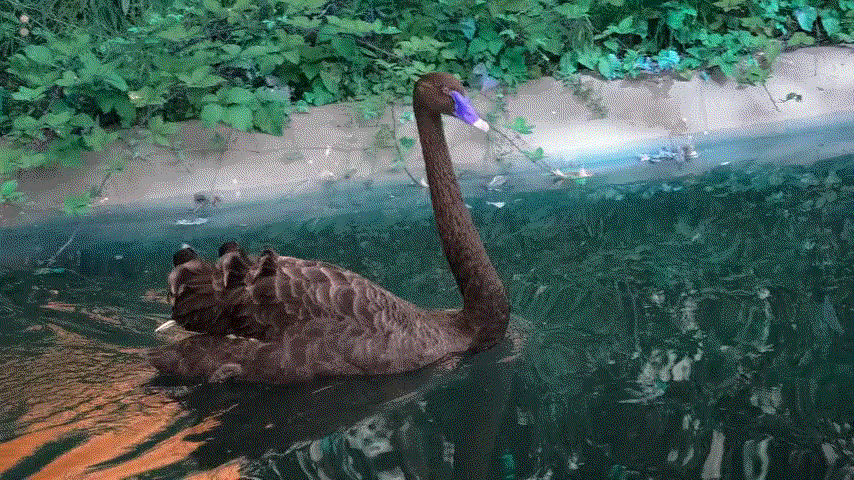Run Segment Anything Model 2 on a live video stream
This is a live example that uses 2 components:
- RealSense camera:
roslaunch realsense2_camera rs_camera.launch align_depth:=true - Real-Time SAM2 with smart prompting: https://github.com/tylerlum/segment-anything-2-real-time
GPT_Grounding_SAM2_Working_Screencast.from.09-08-2024.01.33.52.AM.webm
SAM2_Robust_Screencast.from.09-08-2024.07.07.12.PM.webm
Difference between the default SAM2 (https://github.com/facebookresearch/segment-anything-2) and real-time SAM2 (https://github.com/Gy920/segment-anything-2-real-time):
- Creates
sam2_camera_predictor.py, which is nearly identical tosam2_video_predictor.py, but doesn't read in all frames at once from a file, but predict sequentially on new images
Difference between real-time SAM2 (https://github.com/Gy920/segment-anything-2-real-time) and this fork of real-time SAM2 (https://github.com/tylerlum/segment-anything-2-real-time):
-
Slight modifications to
sam2_camera_predictor.pyto properly handle bounding box prompts -
Addition of
sam2_ros_node.py, which listens for RGB images and outputs a mask. It needs a prompt, which can come from a text prompt, a mesh => image => text prompt, or a hardcoded position -
Addition of
sam2_model.py, which is a nice wrapper around thesam2_camera_predictor.py. It is very robust, doesn't seem to need to re-start tracking extreme for extreme cases. -
Addition of
mesh_to_image.pyto go from mesh to mesh image (pyvista),image_to_description.pyto go from mesh image to text description (GPT-4o),description_to_bbox.pyto go from text description to bounding box around that object in a new image (Grounding DINO), andmesh_to_bbox.pywhich puts these things together. All of these are runnable scripts you can try.
ROS Noetic installation with Robostack (https://robostack.github.io/GettingStarted.html)
conda install mamba -c conda-forge
mamba create -n sam2_ros_env python=3.11
mamba activate sam2_ros_env
# this adds the conda-forge channel to the new created environment configuration
conda config --env --add channels conda-forge
# and the robostack channel
conda config --env --add channels robostack-staging
# remove the defaults channel just in case, this might return an error if it is not in the list which is ok
conda config --env --remove channels defaults
mamba install ros-noetic-desktop
mamba deactivate
mamba activate sam2_ros_env
Grounded SAM2 install (https://github.com/IDEA-Research/Grounded-SAM-2)
git clone https://github.com/IDEA-Research/Grounded-SAM-2
cd Grounded-SAM-2
cd checkpoints
bash download_ckpts.sh
cd ..
cd gdino_checkpoints
bash download_ckpts.sh
pip3 install torch torchvision torchaudio
export CUDA_HOME=/path/to/cuda-12.1/ # e.g., export CUDA_HOME=/usr/local/cuda-12.2
pip install -e .
pip install --no-build-isolation -e grounding_dino
pip install supervision pycocotools yapf timm
pip install dds-cloudapi-sdk
pip install flash_attn einops
# May need to pip install a few other things, add to this list as needed
pip install tyro
# Can also get Grounding DINO 1.5 API token if desired, refer to https://github.com/IDEA-Research/Grounded-SAM-2 for details
# I put my api tokens in
vim ~/api_keys/grounded_sam_2_key.txt
vim ~/api_keys/tml_openai_key.txt
Then, run with:
# Set ROS variables if running across PCs
export ROS_MASTER_URI=http://bohg-franka.stanford.edu:11311 # Master machine
export ROS_HOSTNAME=bohg-ws-19.stanford.edu # This machine
python sam2_ros_node.py
If things are not working, make sure that you can do things like:
roscore # ROS works
rostopic list # See expected topics
For some reason, I have had to do this sometimes:
mamba deactivate
mamba activate sam2_ros_env
Was better than Grounding DINO for things like "primary object", but not as reliable in general. When given a good prompt, Grounding DINO seemed to be better.
Grounding DINO worked well with a good text prompt, but very poorly otherwise. This motivates the use of ChatGPT to caption the mesh image (automated pipeline without human).
T-REX and DINO-V and OWL-VIT can be conditioned on an image, but they were not reliable enough for me.
https://huggingface.co/spaces/johko/image-guided-owlvit
- 20/08/2024 : Fix management of
non_cond_frame_outputsfor better performance and add bbox prompt
pip install -e .Then, we need to download a model checkpoint.
cd checkpoints
./download_ckpts.shThen SAM-2-online can be used in a few lines as follows for image and video and camera prediction.
import torch
from sam2.build_sam import build_sam2_camera_predictor
checkpoint = "./checkpoints/sam2_hiera_large.pt"
model_cfg = "sam2_hiera_l.yaml"
predictor = build_sam2_camera_predictor(model_cfg, checkpoint)
cap = cv2.VideoCapture(<your video or camera >)
if_init = False
with torch.inference_mode(), torch.autocast("cuda", dtype=torch.bfloat16):
while True:
ret, frame = cap.read()
if not ret:
break
width, height = frame.shape[:2][::-1]
if not if_init:
predictor.load_first_frame(frame)
if_init = True
_, out_obj_ids, out_mask_logits = predictor.add_new_prompt(<your promot >)
else:
out_obj_ids, out_mask_logits = predictor.track(frame)
...- SAM2 Repository: https://github.com/facebookresearch/segment-anything-2



















